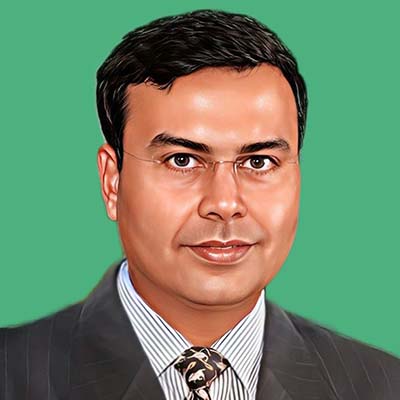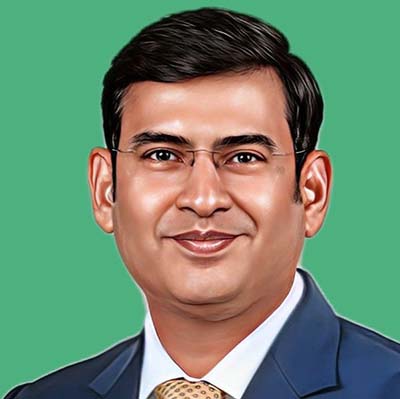

- David Tilley
- Chief Commercial Officer, BNP Paribas Commercial Finance

- Deepak Bhalla
- EVP Finance, Infosys

- Rajeev Rathi
- Managing Director, Corporate Coverage, India, BNP Paribas

- Tom Alford
- Deputy Editor, Treasury Management International
Infosys Leveraging its BNP Paribas AR Facility
Deepak Bhalla, Executive Vice President Finance, Infosys; David Tilley, Chief Commercial Officer, UK, BNP Paribas, Commercial Finance; and Rajeev Rathi, Managing Director, Corporate Coverage, India, BNP Paribas, explore the value of a global receivables purchasing facility.
With more than four decades’ experience, Infosys has become a global leader in next generation digital services and consulting. Today, with annualised revenues exceeding $18bn, the firm enables clients in 56 countries to navigate their transformation journeys using AI, cloud, and a wide spectrum of other digital technologies.
Across this trading ecosystem, Infosys is known for working closely with the communities in which it operates. It does so through a global network of branches and subsidiaries that it has built both organically and by acquisition.
Because of the size and reach of Infosys, one of its key partners is Tier 1 bank BNP Paribas. Well-rehearsed in extending its network to the benefit of its clients’ global operations, Rathi says the bank has collaborated with Infosys to develop “engagements in multiple countries on cash management, risk management, and supply chain solutions”.
One project of note is a centralised AR programme. Initially set up in 2017 in APAC, this revolving non-recourse receivable purchase facility was subsequently extended to UK/ Europe, covering a number of Infosys’ European and US subsidiaries. It is used to support working capital needs, on a selective basis, for businesses in the US, Germany, Poland, Sweden, and Luxembourg.
Flexible friend
The overarching aim of the programme encompasses three main objectives, explains Bhalla. The first is to optimise working capital management, with customers demanding extended credit periods in a pressurised liquidity market. The second is to improve credit risk management. And the third simply explores the AR programme’s arbitrage prospects.
“Initially, it was a bit of an experiment,” admits Bhalla. “We just wanted to see how it would work, and how we could leverage this opportunity.” By any definition, it has proven successful, with the programme scaling very well.
The programme began with a multi-geography, multi-obligor model, because Infosys wanted to scale it quickly if it worked well. As Bhalla explains: “The whole plan was to start small in numbers, but in all geographies.”
This is where BNP Paribas’ flexibility and willingness to create a practical solution capable of fitting within Infosys’ specific requirements played well. “We had some specific nuances in terms of the multi-entity companies that we work with, but we found BNP Paribas to be pretty open to listening to our inputs,” comments Bhalla. “They were challenged by our team on several occasions but would always come back with a solution that worked well for us.” But then, he continues, “they also challenged us at times by finding new ways to improve the way we were operating”. The dialogue was always executed in a “very friendly and collaborative” environment, contributing to the programmes rapid scaling up.
Progress was also aided by the targeted simplicity of the project, notes Tilley. “We had to ensure that the programme not only provided Infosys’ local subsidiary management with the ability to interact with the facility themselves, but also that it provided a centralised holistic view for the treasury management team in India.”
Key to this approach, he adds, was BNP Paribas’ experience of delivering programmes of this type and scale, combined with its proprietary receivables programme platform. This solution, he says, became an essential component, not only for the “right visibility at corporate level” but also to ensure every interaction with the bank would be straightforward, “with certainty of execution”.
Defining moments
Given the scale of Infosys’ global operations, a tailored treasury solution was essential. BNP Paribas’ global capability, operating through its core platform, needed to match Infosys’ complex requirements. Establishing the facility “wasn’t without challenge”, recalls Tilley.
Indeed, working at scale, the different legal requirements across Infosys’ broad sweep of geographies, for example, took time and effort to refine. As Tilley reports: “We’re grateful for the Infosys team’s support throughout this phase because, ultimately, we ended up delivering a seven-country extension to this programme, on an ‘optimal balance sheet’ basis, with a single consolidated legal document, operating through one point of entry to the bank, both from a data and a relationship management perspective.”
Because domestic needs were necessarily being catered for, one of the main hurdles, according to Bhalla, was meeting every local legal contractual obligation. “Even in Europe, the teams had to ensure that not only were all domestic legal requirements being met but also at our end, working with multiple entities, we needed to ensure that the needs of the local boards were being satisfied alongside those of our centralised treasury.”
For Rathi, the project was about simplicity yet at the same time building a programme that would stand the test of time. “It needs to be available for more entities as they are created, and more customers as they are onboarded. This is why it had to be a programme that, once established, could run trouble-free for many years, with only the occasional upgrade.”
Picking up on the theme of longevity, Bhalla comments that, as well as adding more counterparties and more of Infosys’ entities into the programme, having facilitated the execution of receivables sales to BNP Paribas, a plan is in motion to explore ways of increasing the coverage. “It’s a work in progress,” he reports.
Pathway to success
There is no mistaking that this has been a successful collaborative effort between Infosys and BNP Paribas. For Bhalla, while he says the bank is “receptive to our ideas”, its proactivity has seen it apply its understanding of Infosys’ individual needs, and respond to these by recommending new ideas and lines of business. “It shows how well they understand us.”
This approach has clearly helped to deliver that success in the longer term. The experience has created a positive impression on Bhalla, who acknowledges that it requires effort and input from both sides. Indeed, he advises others who are interested in setting up a similar programme “to be very clear about intention”.
“It’s common to look at these programmes as simply tactical. But believe me, you’ll be a lot better off working out a strategic programme. This must have a clear vision and well-defined – and clearly communicated and understood — long-term objectives, because it will require a significant initial investment from both you and your banking partner.”
Bhalla further advises both parties “to be open to listening to each other” because this will help in tailoring the requirements and the solution itself. “So often in these projects, what works for one entity does not necessarily work for another, “ he warns. “If a banking partner arrives with a template, it may be assuming that all companies are the same. But each company has its own nuances, and these need to be worked through.”
For Bhalla then, the more well-defined the business’ requirements are, the more the banking partner will be able to understand them and, accordingly, provide a tailored solution. However, he adds, “they will have more experience in setting up these programmes than you, so listen to their suggestions, and then work through them collaboratively. That way you can devise a solution that works for all parties”.
Given the complexity of a project of this nature, Rathi advises the need for a senior project champion or leader. “They need to be personally invested to ensure it keeps moving, and that whatever the requirements, whatever the challenges, they are addressed in the right manner.”
Of course, operational understanding on both sides stems from regular contact, notes Tilley. “Dialogue throughout the set-up phase sounds obvious, but that communication really is essential to maintain project momentum.” He further advises setting up, and communicating, clear project milestones. “It will ensure all parties are aware of what is required of them.”
The unmistakable commitment of the Infosys team throughout this project is praised by Tilley. “It has meant we have been more easily able to navigate many of the essential technical aspects of setting up a bank programme, such as KYC and data exchange.” The fundamentals, he notes, were purposefully tackled early on. “And with that client commitment, it ensured easier and quicker progress to the core aspects of what we’re all trying to achieve.”
“As a client centric organisation, we at BNP Paribas strive to support clients by extending our network across the globe for them,” says Rathi. “We strongly feel that we have a solid platform, and product offering to service our clients across the value chain. In India, BNP Paribas works with corporations with global presence, providing customised solutions to address all their banking needs, including some of the most complex ones. We are invariably the first port of call for our clients when it comes to Europe.”
To date, this BNP Paribas AR programme has provided Infosys with a far greater level of predictability over its collections. “Throughout this entire period it has also given us a lot of flexibility,” declares Bhalla.
“We are able to dial the programme up or down, to help us tactically manage our cash flows and working capital requirements. And remember, it was active during the pandemic, where initially we saw clients holding on to their cash and wanting to extend their credit periods. We were able to step in and help.” Even under pressure, he declares, “this programme has stood the test of time”.



